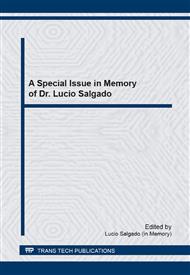p.57
p.61
p.65
p.71
p.77
p.83
p.89
p.94
p.100
Biocatalytic Activity of Glucose Oxidase Immobilized on Functionalized Supports for Enzymatic Biosensors
Abstract:
The present study reports on a novel approach for the development of enzymatic biosensor systems using chemically functionalized supports. Silica glass slides were surface-modified by reacting with organosilanes at room temperature and a glucose oxidase (GOx) enzyme layer was covalently immobilized using the bi-functional linker glutaraldehyde (GA). The activities of enzymes in solution and immobilized on hydroxyl-, amine-and thiol-modified glass surfaces were tested by sensing β-D-glucose with the horseradish peroxidase (HRP) mediated oxidation of 3,3’,5,5’-tetramethylbenzidime hydrochloride (TMB) by H2O2 based on biochemical reactions. The results indicated that the intensity and overall kinetics of the enzymatic catalysis were dependent on solid support chemical functionality with the amine-modified support providing the highest enzymatic catalytic activity.
Info:
Periodical:
Pages:
77-82
Citation:
Online since:
September 2014
Keywords:
Price:
Сopyright:
© 2015 Trans Tech Publications Ltd. All Rights Reserved
Share:
Citation:


